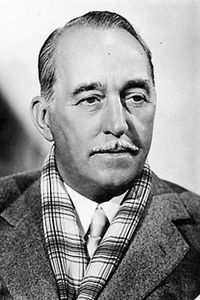Sir Guy Standing, a distinguished English actor, was born on September 1, 1873, and his remarkable life came to a close on February 24, 1937. Throughout his remarkable existence, he left an indelible mark on history, as evidenced by his illustrious service in the Royal Naval Volunteer Reserve during the First World War. Rising through the ranks to the esteemed position of commander, Standing's contributions to the war effort were truly remarkable.
Notably, he was seconded to the esteemed organization, MI6, before being transferred to the Ministry of Information in December 1917. This notable transfer marked a significant turning point in his life, as it paved the way for his subsequent involvement in the British War Mission to the United States in 1918. This pivotal role earned him the esteemed title of Commander of the Order of the British Empire (CBE) in 1918, a testament to his unwavering dedication to the war effort.
In the years that followed, Standing's contributions were further recognized, as he was raised to the esteemed rank of Knight Commander (KBE) in 1919. This remarkable achievement served as a fitting culmination to his distinguished service, and his legacy continues to be celebrated to this day.
After completing his distinguished military career, the renowned thespian, Standing, made a significant mark in the British and American theatrical scenes, showcasing his remarkable acting prowess. This impressive start ultimately paved the way for him to make the bold decision to relocate to the vibrant city of Hollywood in the early 1930s, where he began to make a name for himself in the world of Paramount films.
As his career continued to flourish, Standing's most iconic and enduring role came to fruition in the 1935 film Lives of a Bengal Lancer, where he brought to life the character of Colonel Stone, leaving an indelible mark on the world of cinema and cementing his status as a true Hollywood legend.































